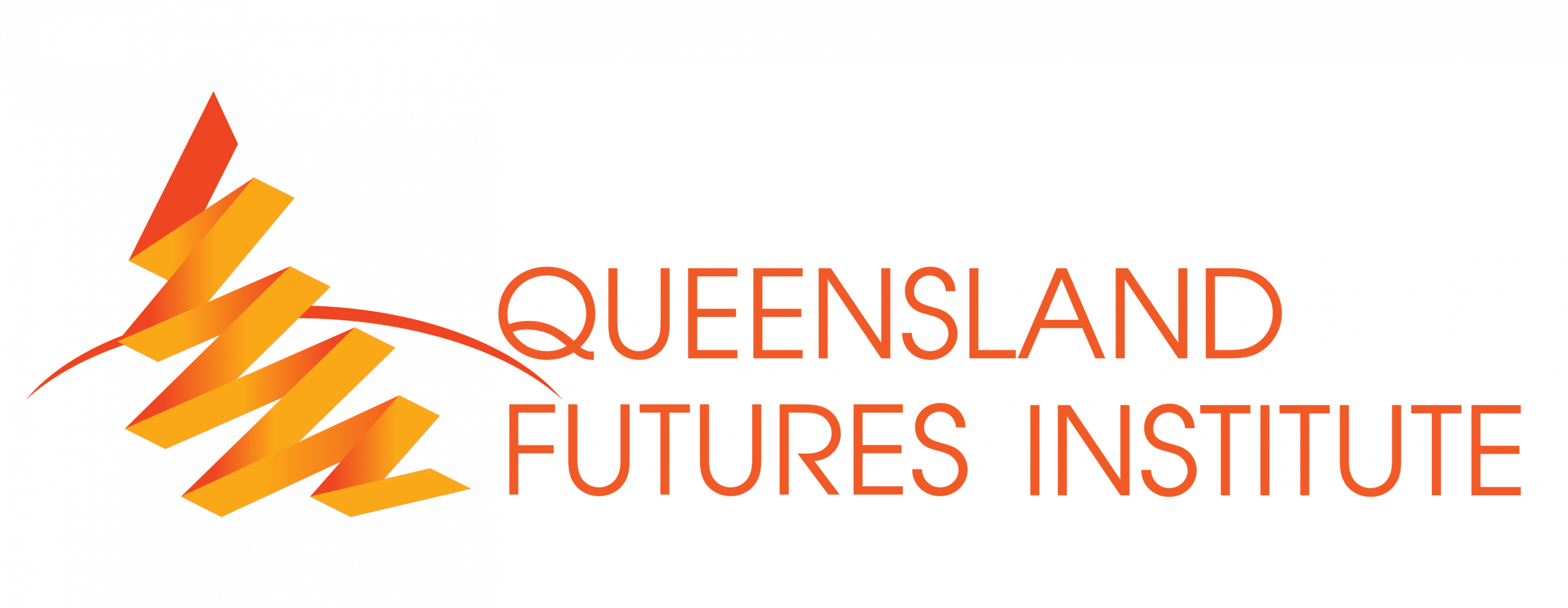|

|
Gene Tunny
- Queensland is part of a global economy – so there is lots of concern around global trade policy and international tensions. Developments in the Middle East and the recent meeting of Chinese, Russian and North Korean leaders in Beijing will affect Queensland
and Australia.
- These impacts will play out across immigration and housing – as we already cannot build
enough houses for all the additional people coming in. There are major concerns around
the implications this will have on housing prices and rents.
- There is also concern around our ability to deliver the 2032 Olympics – which will provide
significant economic opportunity, but will also see some risks.
- Additionally, climate change and energy policy are also key issues as we think about climate change itself, our policy response, and what this means for energy costs – which
impact industry such as refiners and smelters in Mount Isa, Gladstone and Townsville.
- In this context, we should consider the coal royalty regime in Queensland, and taxation
more broadly.
|
|
Can you give us a sense of where we are geopolitically - what are the big flashpoints and what’s
should we be concerned about over the next 12 months?
|

|
Jon Berry
- There have been some major flashpoints in recent years, and their effects are still
being felt.
- From Queensland and Australia’s perspective, many industries have adjusted to these
risks and taken them into account.
- The bigger trend is that we no longer have an operating system of international norms
that suppress conflict.
- Eurasia Group calls this the ‘G-Zero World’ – reflecting that we are no longer in a G20, G8 or G2 system, and there is nobody at the top willing and able to enforce international rules.
- In this situation countries and non-state groups are more emboldened to press their claims. We have seen this in Ukraine, the Middle East and North Africa with conflicts,
regime changes and coups.
- Thinking ahead, we should be thinking about what other countries or groups might press
their claims. For example, we have already seen conflict and skirmishes between India
and Pakistan, which is a symptom of this ‘G-Zero World’.
- Closer to home, there are territorial claims in our region that could have a major impact on
us if they are pressed.
- Another flashpoint is domestic anger here in Australia. There is pent-up resentment about
living standards, immigration and other social issues.
- This is partially a result of polarised information environments, where people are consuming alternative facts from different news sources.
- When an overseas trigger occurs, like the Gaza conflict, it can light the fuse here at home.
- In this situation, when flashpoints occur overseas, they can result in local impacts where
disgruntled citizens can be radicalised by these events.
|
|

|
Gene Tunny
- We’ve also seen China’s territorial claim to Taiwan mentioned last year, and recent riots
in Indonesia.
|

|
Richard Yetsenga
- While there’s a lot of conflict – it’s not all bad news.
- The world is more unstable and uncertain, reflected in recent analysis which highlighted
that a decade ago, 30% of business risks were insurable and now only 10% are.
- This shows the higher degree of uncertainty and the limits of conventional risk management; more thought is needed around how to manage unconventional risks.
- Despite all this, the global economy is still growing at about 3%.
- The World Bank has been warning for years that we’re on the cusp of global recession, defined as global growth below population growth - about 1%.
- However, even with tariffs and China’s structural challenges, the world may still achieve
3% growth.
- If we focus too much on what’s wrong, we risk missing what’s right.
|
|
How dependent are the 2032 Olympics on productivity growth – particularly in the construction sector?
|

|
Dr Karen Hooper
- It’s fantastic that productivity is back in the spotlight at both the state level, with the re-establishment of the Queensland Productivity Commission, and nationally, with the economic reform round table in Canberra.
- Productivity is the main game – and is needed to lift incomes and standards of living.
- However, the statistics are sobering: construction productivity in Queensland has
only grown 5% over the past three decades, compared with 65% in the rest of the
market sector.
- Since 2018, construction productivity has gone backwards, falling 9%.
- This means we now have less productive capacity to deliver the housing and
infrastructure our growing state needs.
- If productivity had stayed at 2018 levels, Queensland could have delivered 77,000 more
dwellings, easing housing supply and affordability.
- We need to lift productivity, but the key question is how to achieve this.
- Our first order of business when the Queensland Productivity Commission was re-established was an inquiry into construction productivity, directed by the Queensland Treasurer.
- We were tasked with identifying the factors behind poor productivity and opportunities
for improvement, with six months for undertaking this major work and to provide
practical, sensible solutions.
- The inquiry is well underway, and we released an interim report in July 2025.
- The terms of reference are broad, with a whole-of-state focus, and they emphasise that
reforms must not compromise quality or safety.
- We’ve been very pleased with the level of engagement from the community,
industry, unions and business.
- I want to thank those who’ve participated, because we rely on evidence-based
insights to shape our recommendations for the Queensland Government.
|
|
Can you elaborate on the tax reforms in the recent Government’s Economic Reform Roundtable?
|

|
Jo Masters
- None of the 10 actionable items from the economic roundtable were material tax reform,
despite its need.
- One positive outcome of the roundtable is that we’ve restarted the conversation and
brought about new ideas which otherwise haven’t changed in 10-20 years and are
politically difficult to achieve.
- There was strong consensus from stakeholders that tax is an important lever to address
intergenerational inequality, which is one of the biggest social issues we face, and it
plays into housing affordability and political unrest.
- The focus will be on taxing wealth more and taxing income less, but exactly what that
looks like will become clearer over the next 18 months.
- However, this government didn’t win the election on a tax reform mandate; it won largely
through preferences.
- While there is clear need for a frank and honest national conversation, it’s unlikely that
we’ll see reform in this term, but the debate will build ahead of the 2028 election.
- What we will see is an opening up of the conversation – with ne w ideas like cashflow
taxes and other proposals from the Productivity Commission.
- The Treasurer has asked Treasury to generate ideas - and we should expect negative
gearing and the capital gains tax discount to be revisited.
- We’ll find out how brave this government is willing to be, because tax is politically
charged and Australians have a mindset that nobody can be worse off.
- We all need to take a step back, think about “Team Australia,” and ask what we want for
our children and grandchildren.
- If nothing changes, we risk being the first generation to leave the next with a lower
standard of living, which would be a shocking outcome.
- We are already seeing childless suburbs in cities because children will not be able to
live in the same cities as their parents
|
|
Can you explain the recent trade war and what this means for Queensland and Australia?
|

|
Brian Parker
- The news isn’t good, and there appears to be no broad, coherent , sensible strategy.
- We’re revisiting tariff ideas that were disproven a hundred years ago, and the tariff wars
are not over.
- President Trump has imposed tariffs which appear random, with no logic, research or reasoning.
- Those tariffs were geopolitically unsensible because they targeted key U.S. allies needed as a counterweight to an emerging China.
- Additionally, the International Trade Court said most of these tariffs are illegal, and the
appeal court agreed.
- The case is heading to the Supreme Court, but until then, we have no legal certainty.
- That leaves businesses unable to plan sensibly because they don’t know the trade rules.
- For Australia and Queensland, we are relatively well placed - we don’t export much to
the U.S., with only about 5-6% of exports directed there. These are mostly commodities
that can be redirected.
- If China is hit hard, that would be bad for Queensland mining e xports. However, the
Chinese government would likely stimulate their economy which would subsequently
mitigate any adverse impacts on Queensland.
|
|
Does it make sense that Brisbane house prices are higher than Melbourne house prices? If not, what’s
going on and what needs to change?
|

|
Richard Yetsenga
- Circular migration flows are common, but they’ve been very supercharged recently.
- Brisbane and Melbourne housing stock is different - Melbourne is much more
apartment-heavy.
- Therefore, in a relative sense, Brisbane is very expensive compared with Melbourne.
- I think we’ll see some reversion over the next three to five years, with Brisbane price
growth slowing and Melbourne picking up.
- Relative to local incomes, Melbourne is quite affordable compared with other East
Coast cities.
- Victoria does face substantial structural challenges, especially on the fiscal side,
which will slow the economy’s recovery.
- But with valuation adjustments, Victoria and Melbourne are now more attractive
places to live.
- I expect that to attract people, and I see anecdotal evidence o f migration out of Sydney
into Melbourne because of the value in the Melbourne property market.
|
|

|
Gene Tunny
- Housing prices and affordability are an important driver, but people are also worried
about youth crime – which is something that must be addressed, particularly in Victoria.
|
|
With AUKUS and increased military spending in the Indo-Pacific, what economic opportunities and
risks does this present for Queensland?
|

|
Jon Berry
- There are some really interesting issues around AUKUS and alliances more broadly.
- For Queensland, Pillar one of AUKUS is less relevant, with most benefits going to South
and Western Australia.
- However, Pillar two - which is focused on advanced and dual-use technologies - is a
major opportunity for Queensland.
- The State Government has leaned into this, and we already have big firms like Raytheon, NIOA and the quantum project here.
- A strong ecosystem requires not just big firms but also small specialist companies that
can plug into their value chains.
- If those big players provide a centre of gravity and policy settings support them, Queensland can build a strong advanced tech environment around the bigger companies.
- On the less positive side, many countries feel less certain about relying on alliance
partners.
- Being under another country’s security umbrella feels less safe, whether you’re in NATO
or in the Pacific.
- This is driving governments to invest more in sovereign defence capabilities.
- For defence industries, including here in Queensland, this means the pie is getting bigger.
- If I were in that value chain, I’d be asking which countries will find Australian products
geopolitically acceptable.
- Trust is becoming a critical factor in defence supply chains.
- For example, some news sources report concerns in Europe that the F-35 fighter jet
could have an American-controlled ‘kill switch’.
- Even close alliance partners are wary of over-reliance on others’ technology.
- Positioning Australia as a trusted supplier will be essential to tap into the growing
defence market.
|
|

|
Gene Tunny
- Additionally, quantum computing could rapidly solve codes, which raises fears that
cybersecurity could be completely undermined.
|
|
If we had built 77,000 homes – had we remained at 2018 productivity levels – how much would this
have helped the current situation, with low vacancy rates and growing homelessness? What do you
think needs to be done by government to fix the construction sector?
|

|
Dr Karen Hooper
- We’ve been asked to provide recommendations to lift construction productivity and help
supply the homes and infrastructure Queensland needs.
- In the interim report released in late July, we identified two main factors dragging down productivity: the growing weight of regulation and suboptimal government procurement practices.
- The report outlined 21 preliminary reform recommendations, 16 of them targeting regulation, as well as 12 additional reform directions for stakeholder feedback.
- We set out four key reform focus areas:
- Government procurement: improving project selection, sequencing and contracting;
rationalising procurement policies; including removing best practice industry conditions.
- Land use regulation: streamlining approvals; removing unnecessary regulation of
building form; and enabling higher-density development to lift housing supply.
- Building activity regulation: reforming the application of the National Construction
Code; reviewing Queensland-specific financial regulations, improving workplace health
and safety regulation; and removing barriers to modern methods of construction.
- Labour market: addressing labour shortages by reforming occupational licensing
and labour hire regulation.
- We invited submissions on the interim report and received a strong stakeholder response and over the next few weeks will finalise our recommendations.
- This consultation is critical as we want to test and challenge our thinking to make sure
we identify the right solutions.
- There are no quick or easy wins, but the interim report represents the start of the development of a reform program for the Queensland Government’s consideration.
- We’re in a sprint to finalise the report, which is due to the Queensland Treasurer on 24
October 2025.
|
|
What’s the outlook for state governments and their borrowing programs? Are you concerned about the availability of capital to fund the state government’s infrastructure program?
|

|
Jo Masters
- Globally, in a more fragmented world, governments are increasing debt levels through defence, infrastructure and services - particularly post-pandemic.
- In Australia, state debt issuance has grown, and now the states issue more than the federal
government, which wasn’t the case pre-pandemic.
- We are now competing with other countries for foreign investors, including AAA-rated
economies like Germany that are ramping up issuance.
- For Australia, two key factors support our ability to attract investors:
- Migration: done well, it’s a powerful tailwind and not something all AAA economies can achieve. It supports long-term growth and makes housing supply crucial.
- Connectedness with Asia: investors see Australia as a way to access Asia’s growth in a more stable, regulated and protected economy.
- These two factors keep Australia on the radar of foreign investors.
- Additionally, Australian state governments offer very good risk-adjusted returns; the outright return is similar to a single A-rated US corporate, but with far less risk.
- Many foreign investors tell me Australian semis are among the best value investment
opportunities globally.
- In Queensland, government debt is relatively low - at around 10% of the economy, compared with about 30% in Victoria.
- Queensland is starting from a stronger position, with many major projects ahead – particularly around infrastructure, energy transition and the Olympics.
- We are a well-diversified economy that benefits from migration and are therefore well placed as a great investment location globally.
|

























